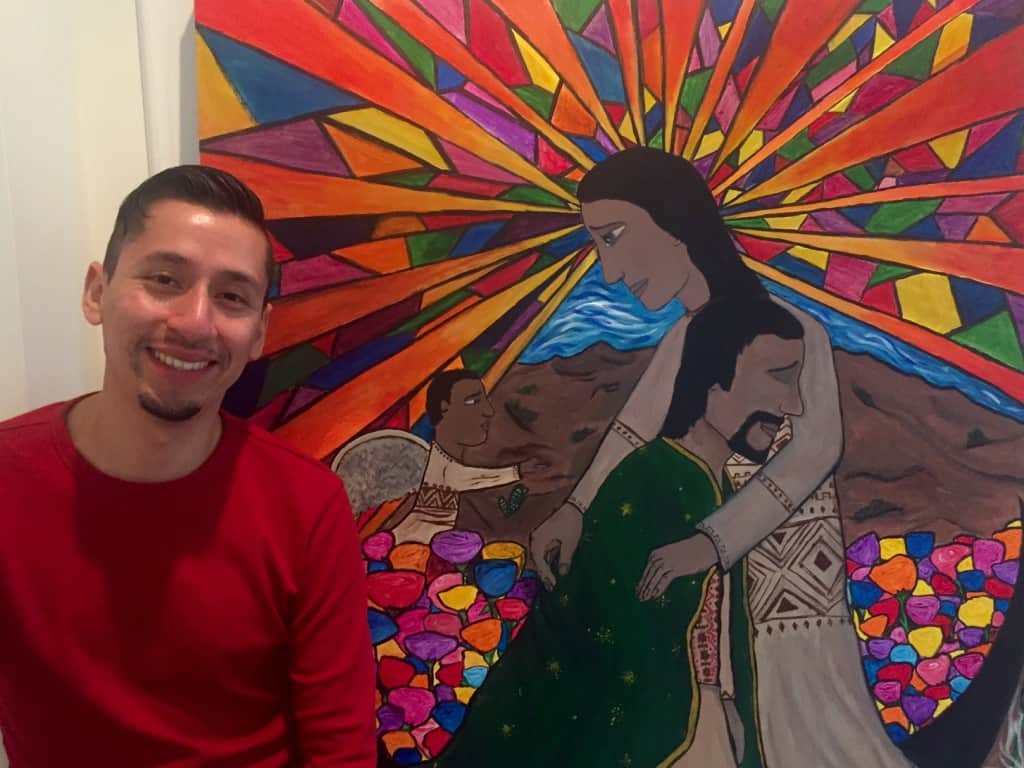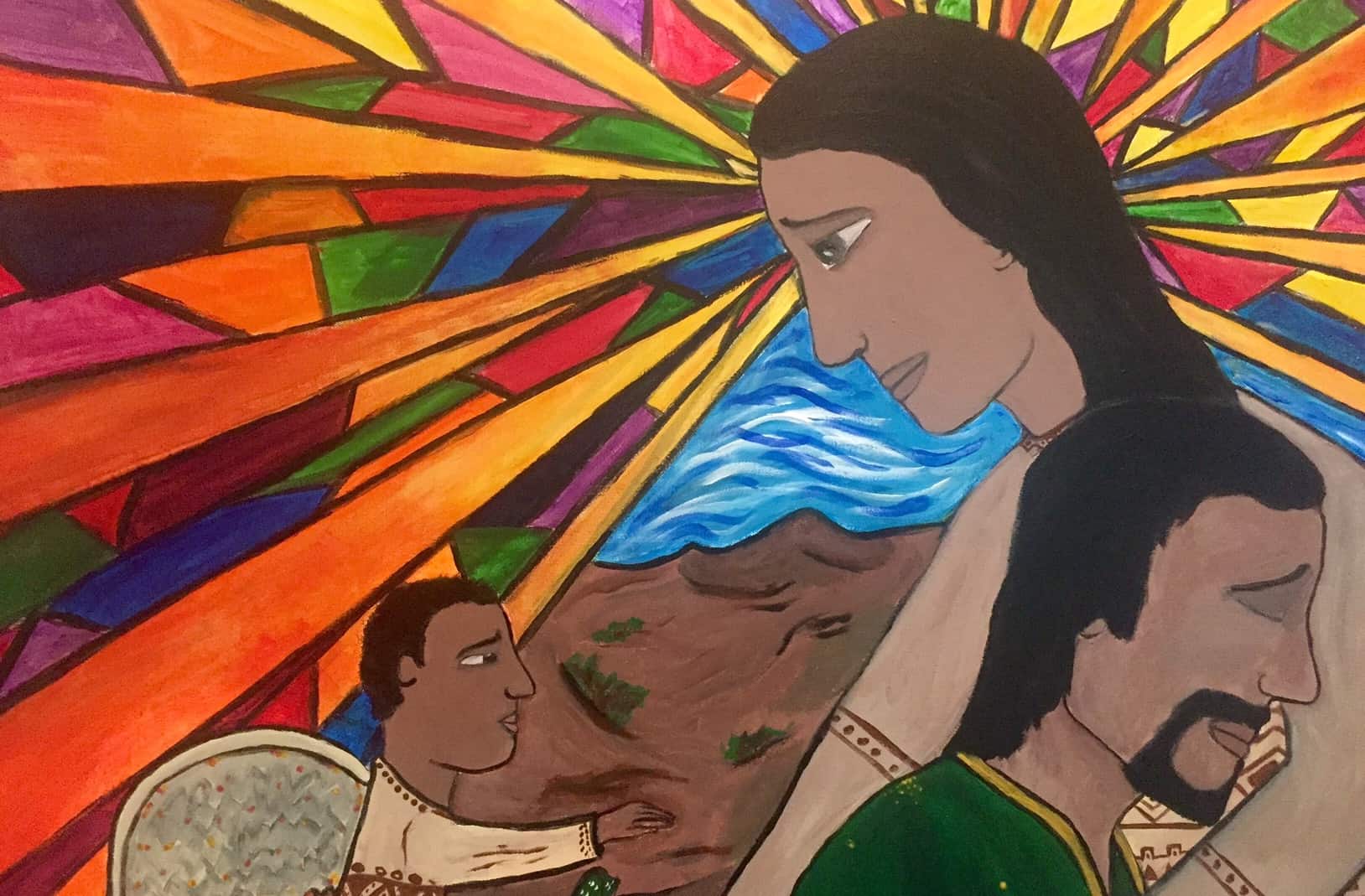By the end of my first month of serving at Casa de los Pobres, a food pantry for Latino migrants in Tijuana, I had to admit to myself that I was struggling.
One night, feeling lonely and terribly ill, I prayed in the shelter’s dark, cold chapel. For that hour, the only thing I said was: Mamá María, cúbreme con tu manto bendito.
This was a prayer that my mom had taught me as a kid. The prayer made one simple request: “Mommy Mary, wrap me in your holy veil.”
As I repeated this line, a vivid vision entered my mind:
I saw an indigenous woman cover me with a warm, green veil. She then held me, like a mother consoling her child.
Here I was, wrapped in the comforting veil and arms of la Virgen de Guadalupe.
After the meditation, I promised to one day paint what I had seen. Unfortunately, time passed and I never got around to it.
***
In August of 2015, I was called into the office of the parochial school in Ferguson, MO where I currently work—coincidentally named “Our Lady of Guadalupe Parish.” Knowing my reputation as a Latino/Chicano artist, Sr. Cathy, the nun and pastoral assistant of the parish, made a request.
“We’re looking for new parish artwork. We want something that will have Our Lady of Guadalupe on it. We would like to commission you for this piece. Would you be willing to do it? Could you have it ready before the feast of Our Lady of Guadalupe?”
“Yes, I’d be more than happy.”
I had the perfect idea.
I bought a 48” by 48” canvass and countless bottles of paint. I recalled the vision from my time in Tijuana and the sketching began:
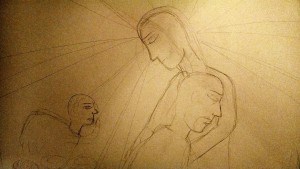
A month in, I began to make significant additions and changes to the piece. The first was to make Juan Diego (not me) the one to be covered by the veil. The second was to make the angel beneath the Virgen an African man. Given the importance of Africans in Latino history, identity and culture, as well as the fact that Ferguson (and the parish school) is predominately African-American, I felt it important to somehow incorporate the black community into the piece.
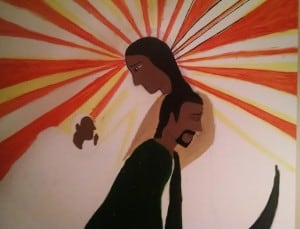
The next step: colors. My favorite part of painting is incorporating traditional Latino colors into my pieces. These lively colors bring life to an image and also embody the essence of Latino culture.
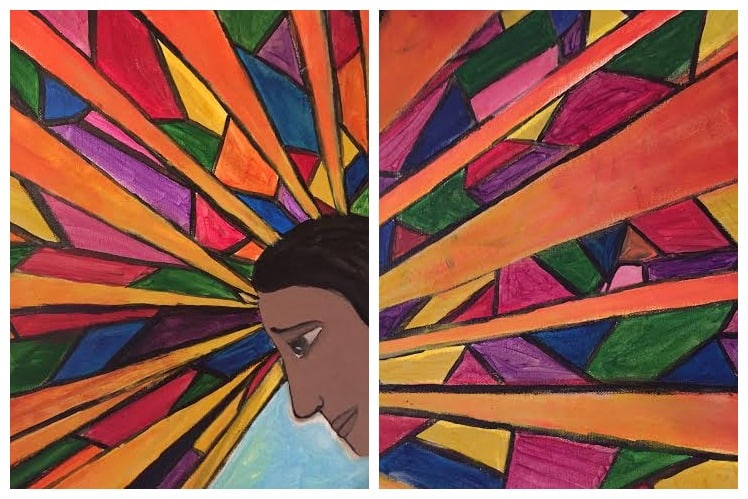
In late November, the due date was pushed up by a week. Sr. Cathy and the pastor wanted to present the piece by December 4th. I said that it would be no problem…
Little did I realize that I had a long ways to go before completing the work. The Tepeyac valley was missing, new ideas came to mind (like adding Aztec symbols), Mary’s face wasn’t quite right, the veil needed more work, and lines needed darker definition. It was crunch time.
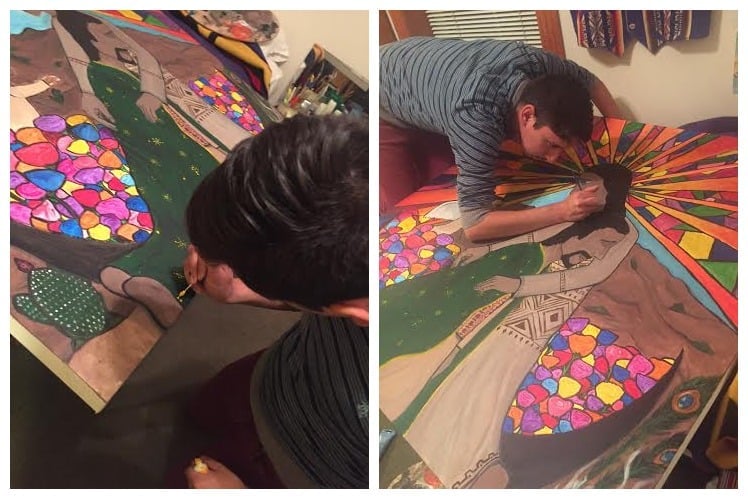
I began to tear up when I looked at the finished product. I felt God and Our Lady of Guadalupe present in the image. German philosopher Hegel describes art as the process of making the Spirit conscious and tangible, and I humbly felt that I had done just that. I had translated something spiritual into this material world.
On December 12th, the piece will be processed into Our Lady of Guadalupe Parish. It will then be hung up as official parish artwork. Nuestra Señora de Guadalupe is so central to me and to the Latino culture and experience. And so, it is a true gift for my art to be integrated into a Latino parish and into her feast day celebration–the biggest Latino-Catholic celebration of the year.
¡Que viva la Virgen de Guadalupe!
